PERSONALITY The word personality from the Greek word




























































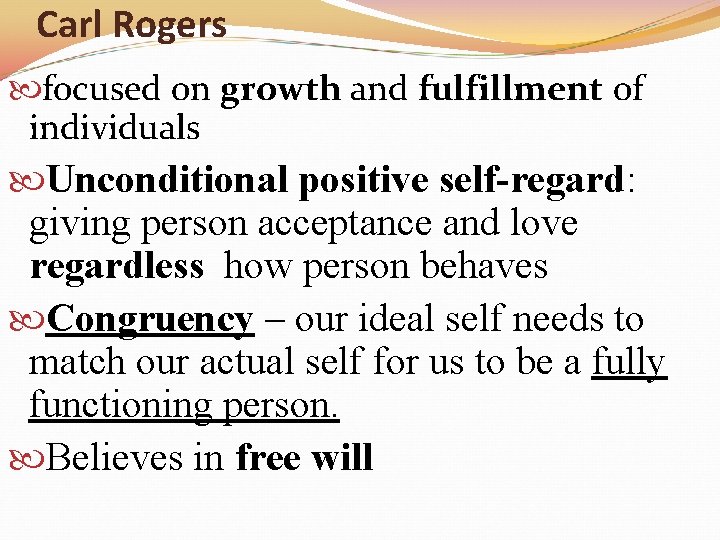








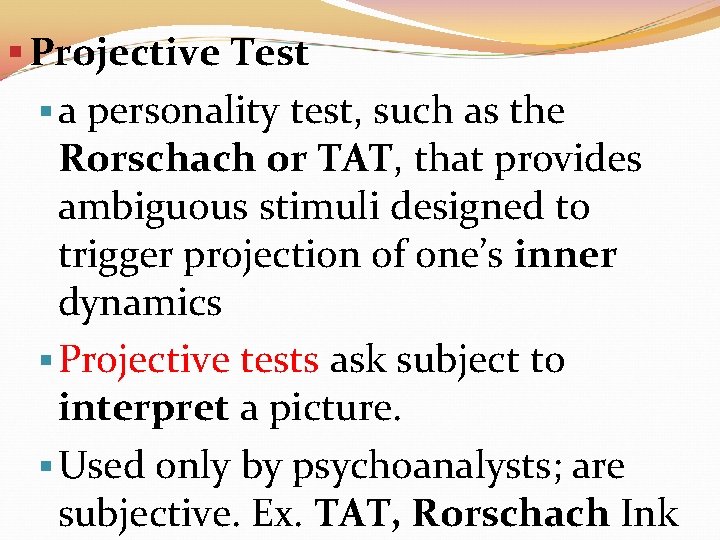





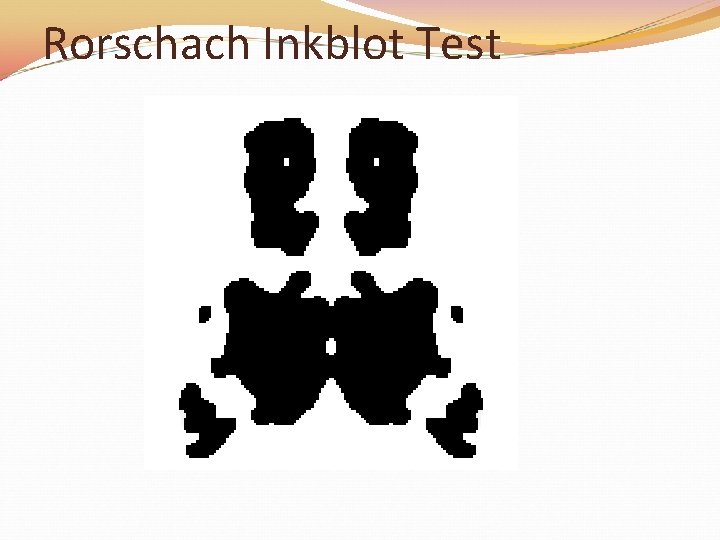
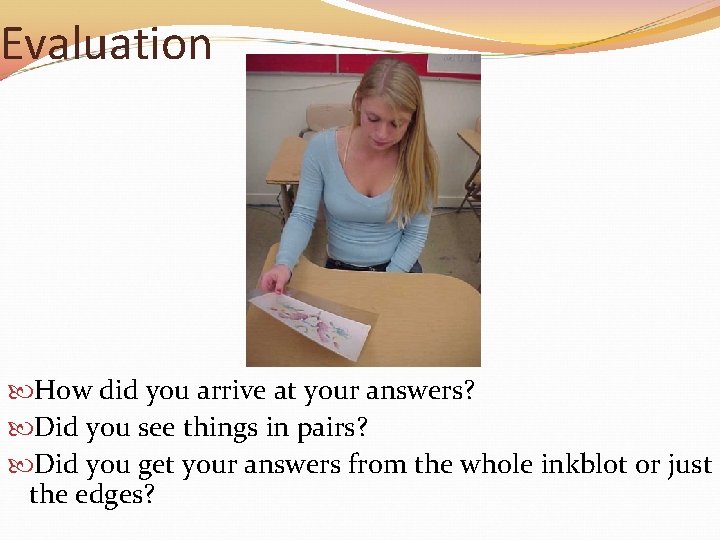


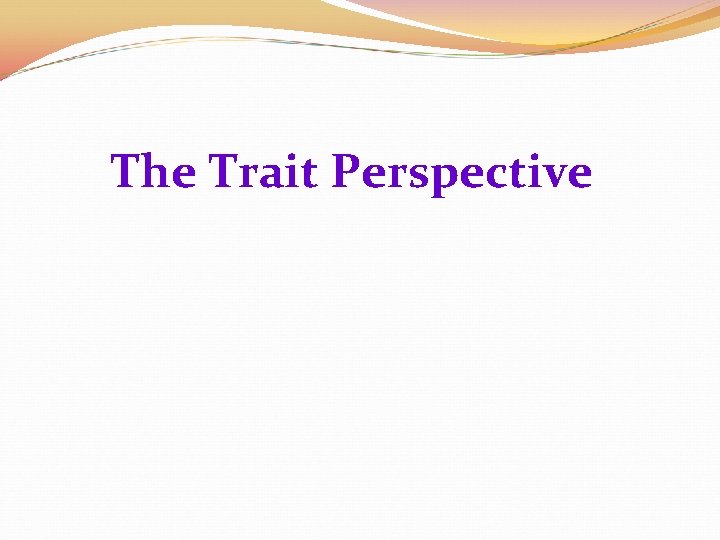

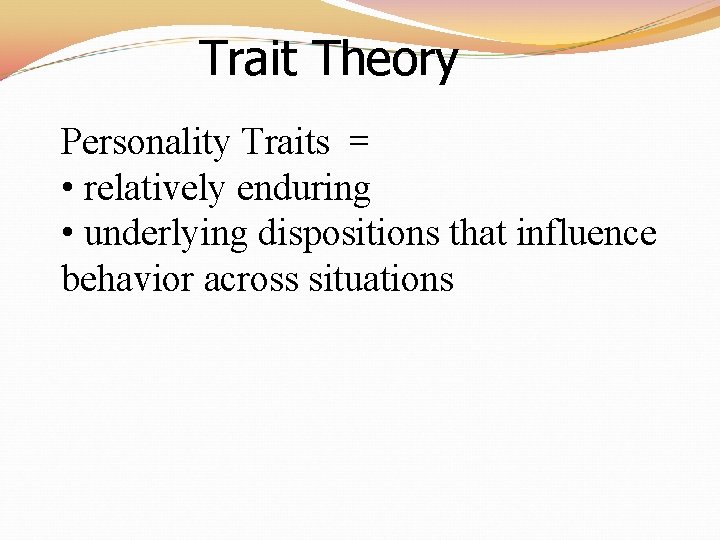

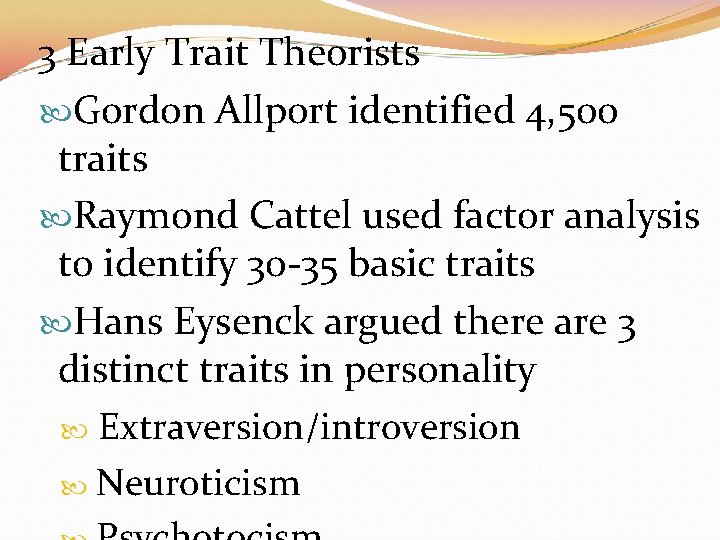
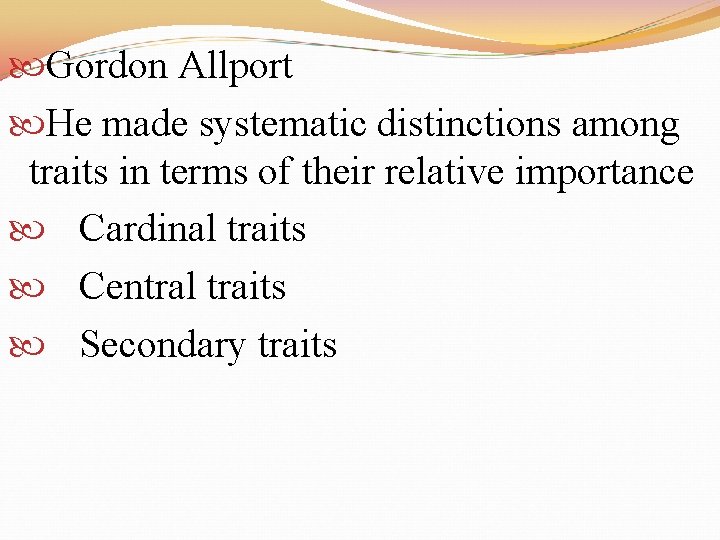
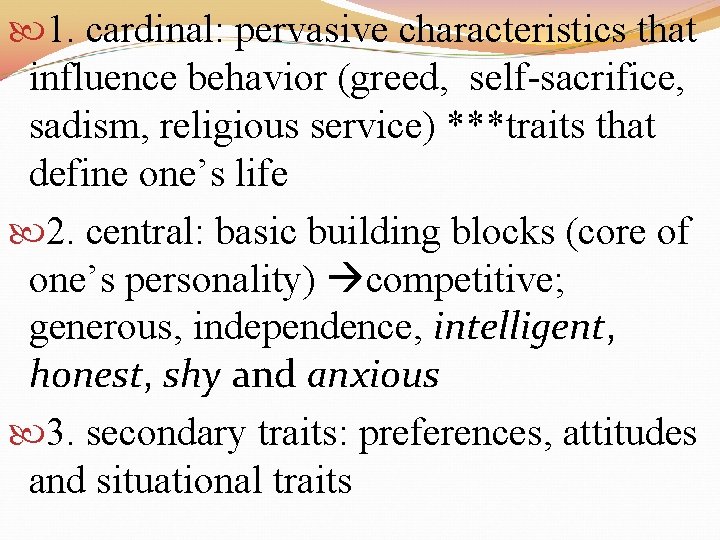

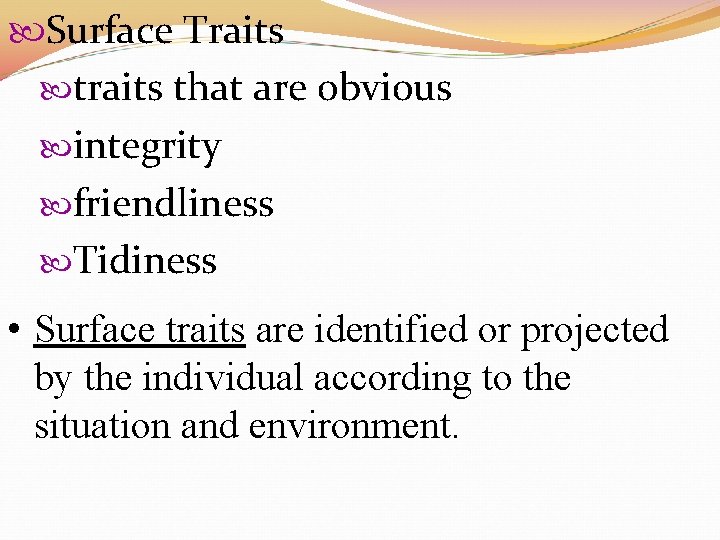

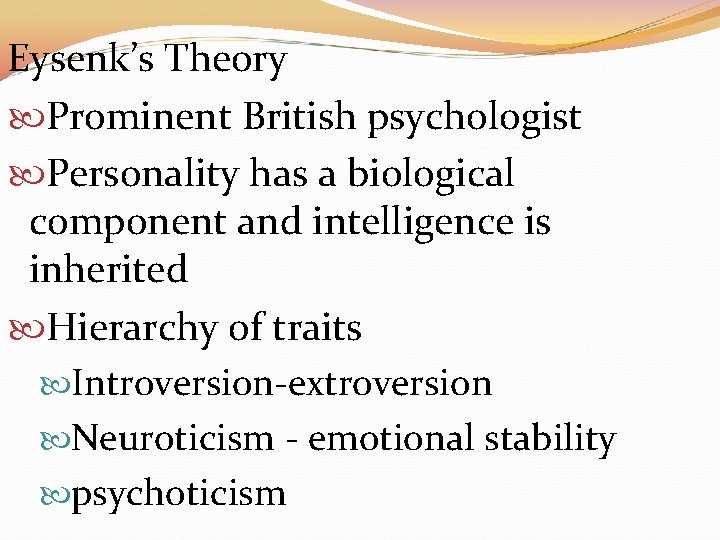
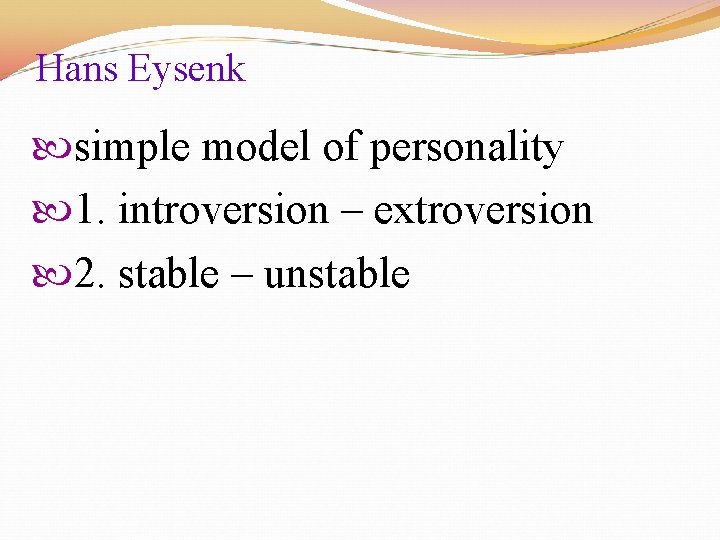
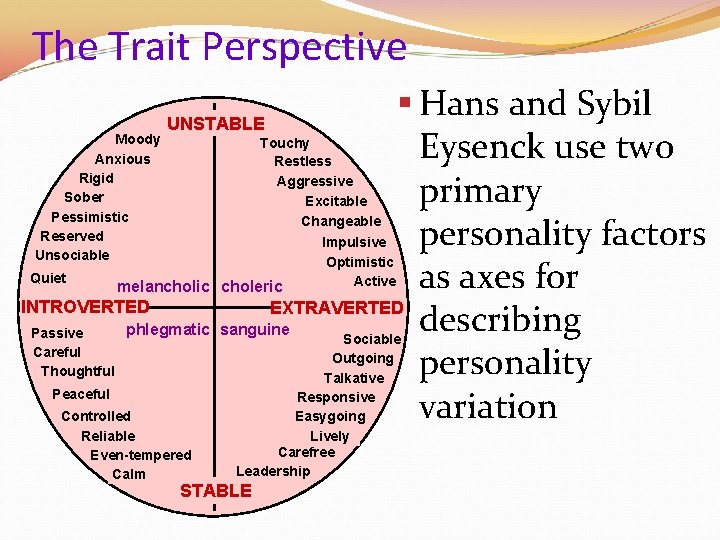
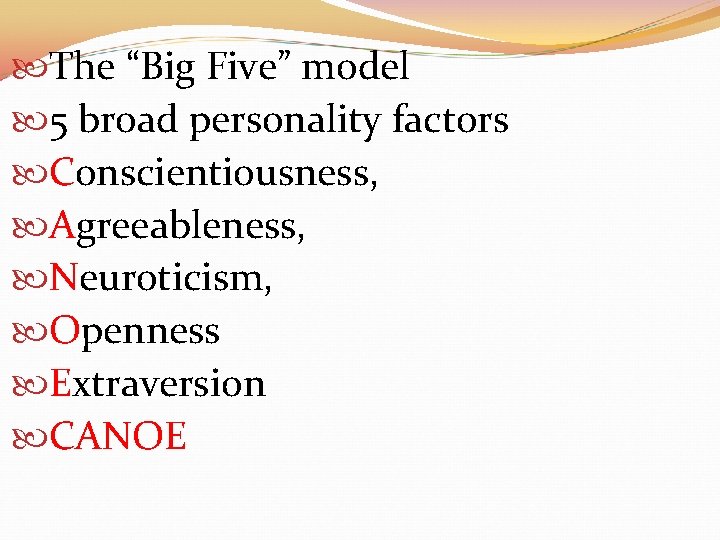
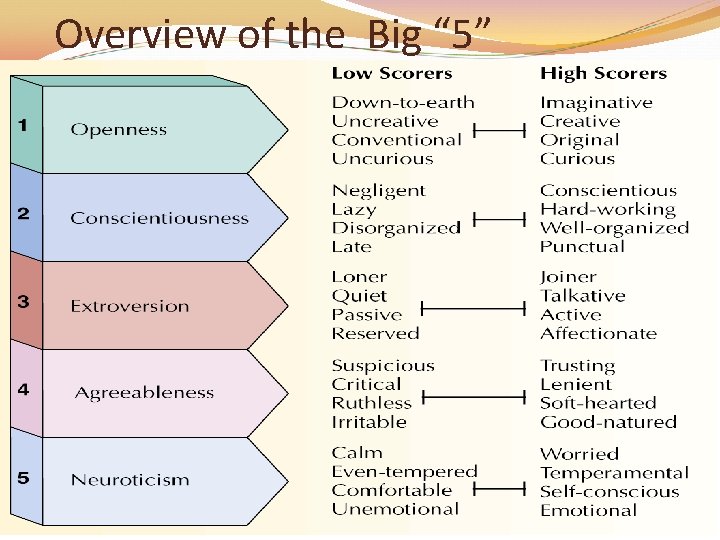
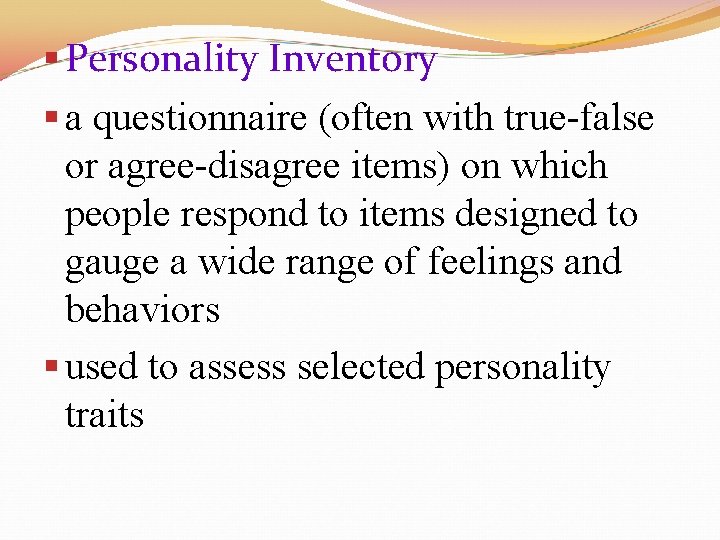
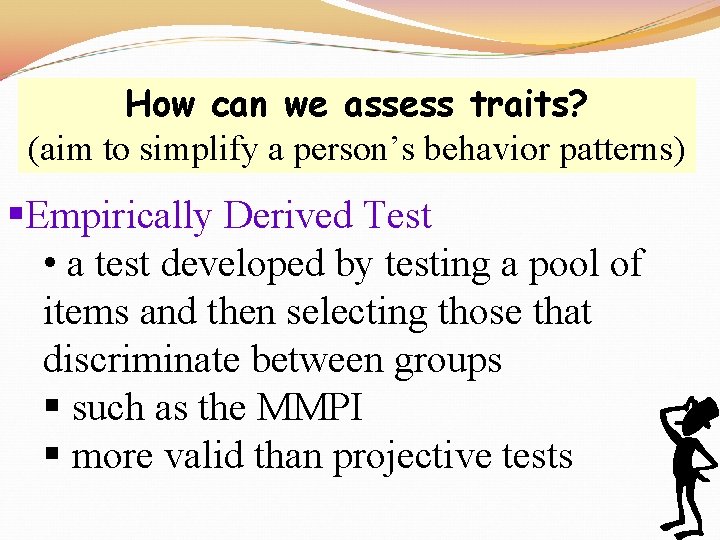
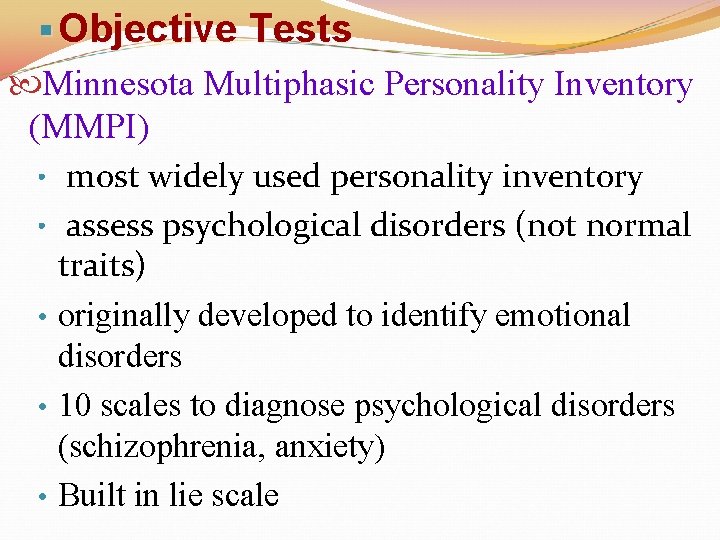
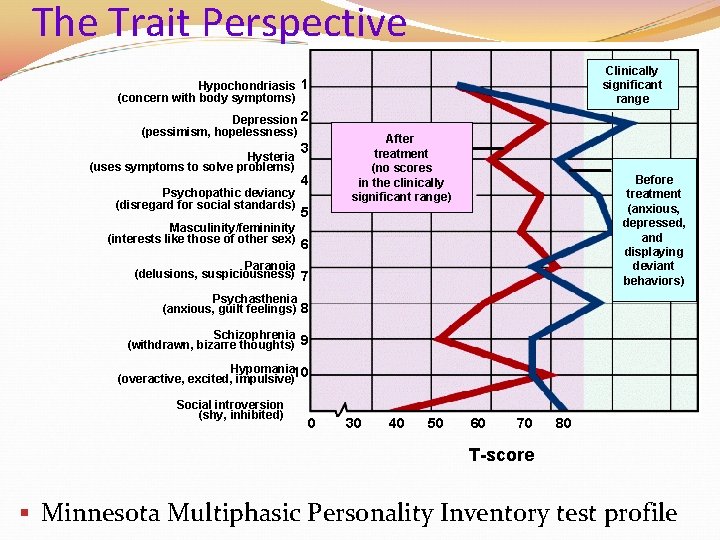

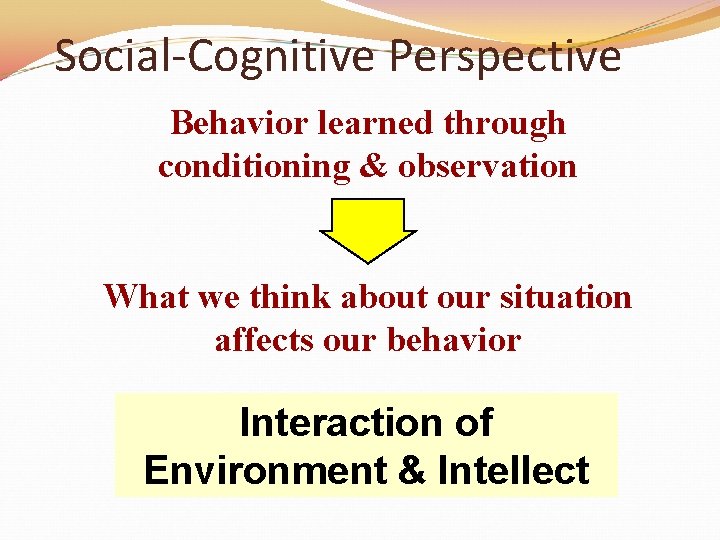
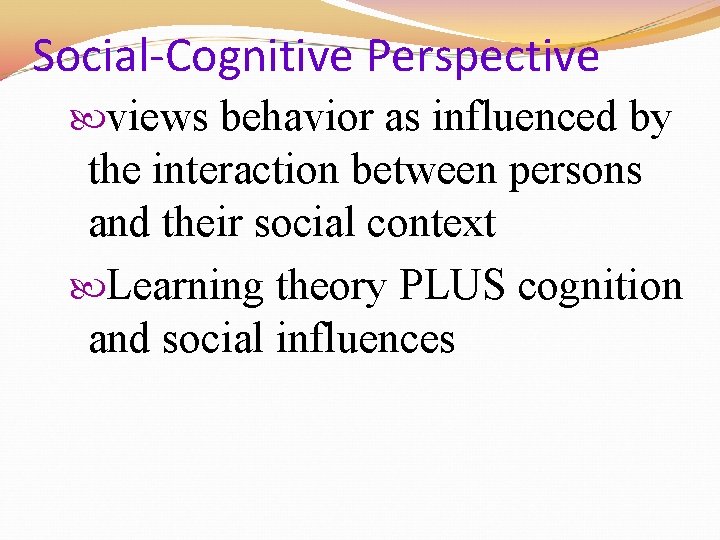

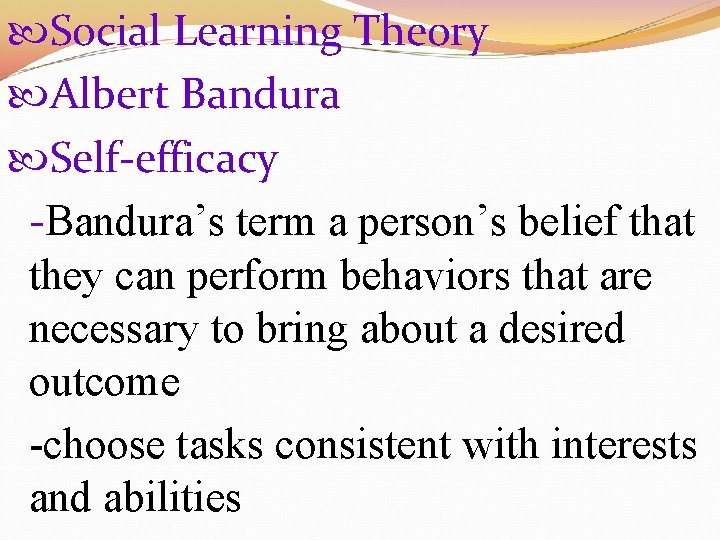
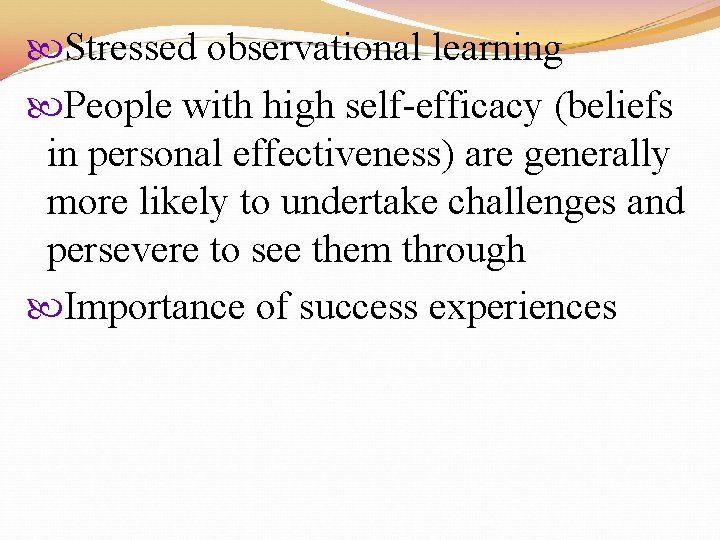
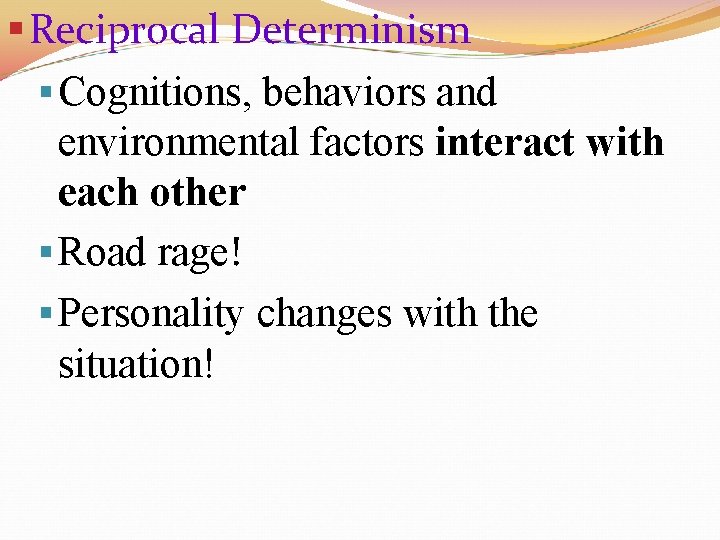
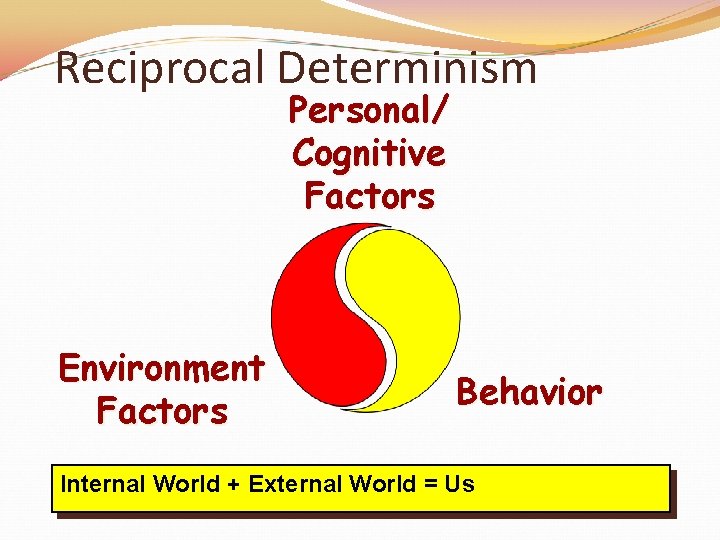
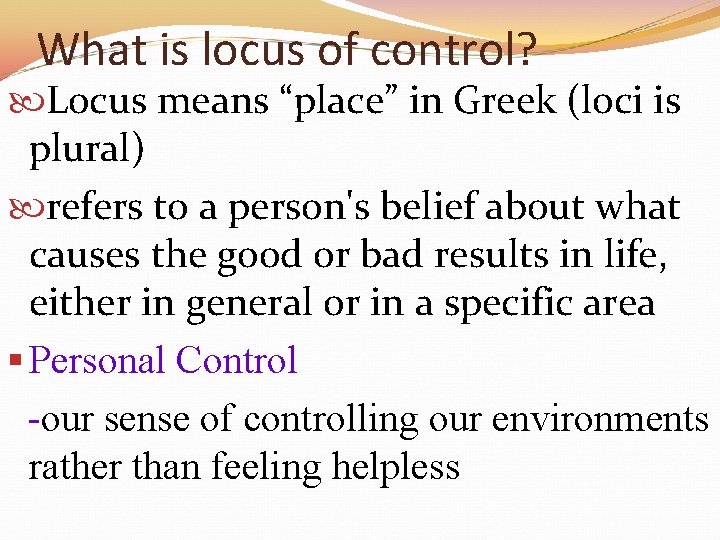
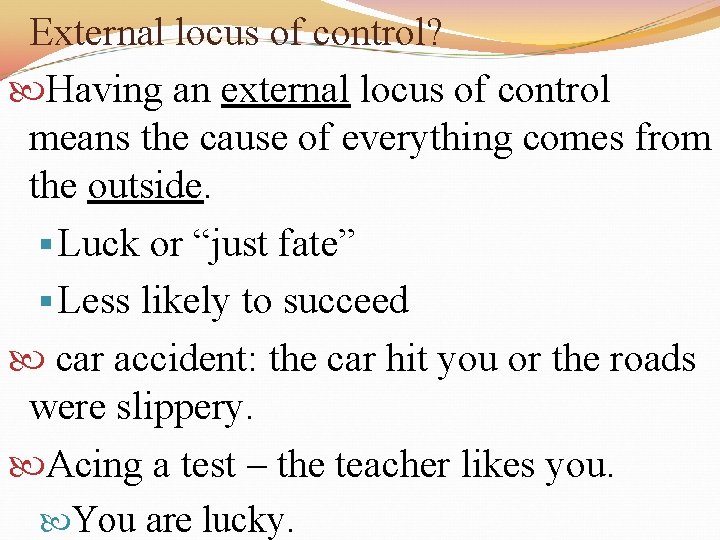
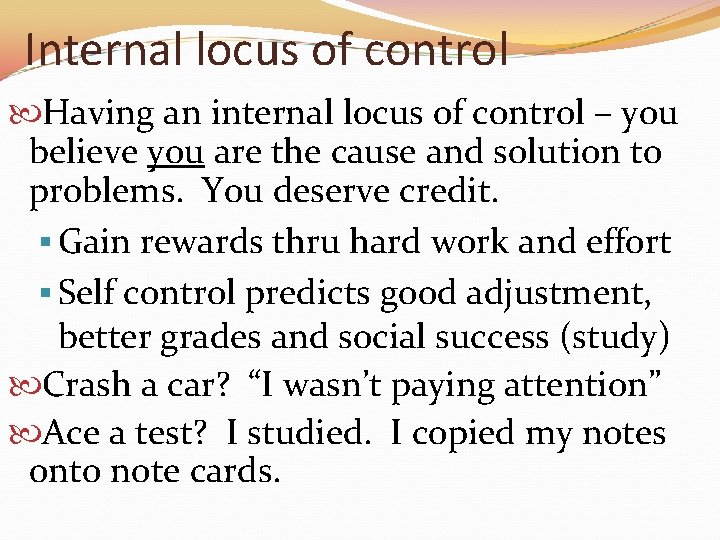
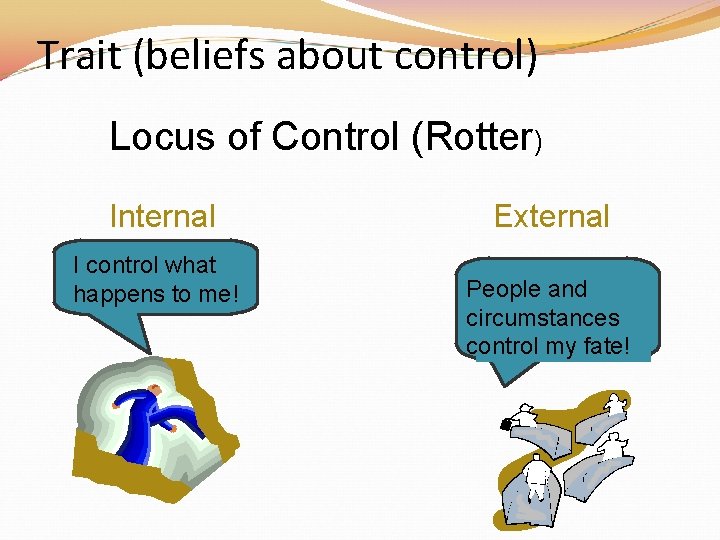

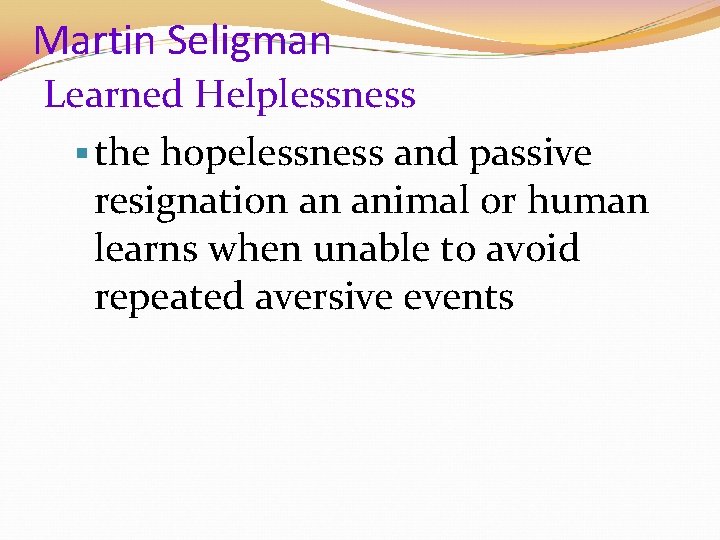

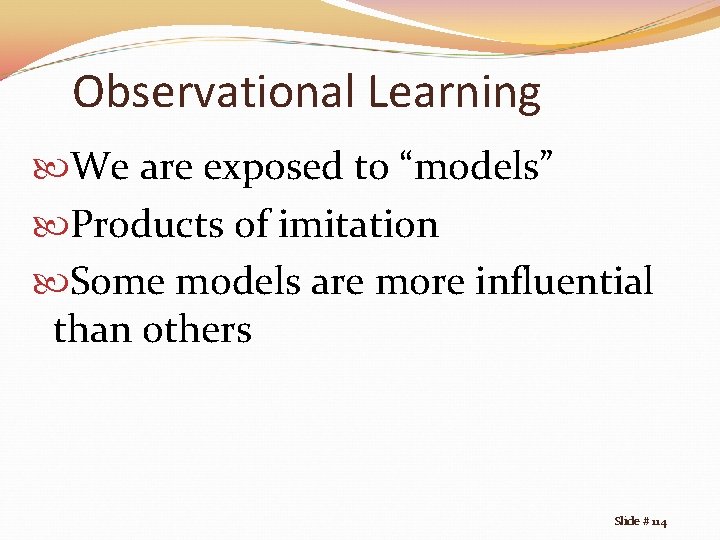
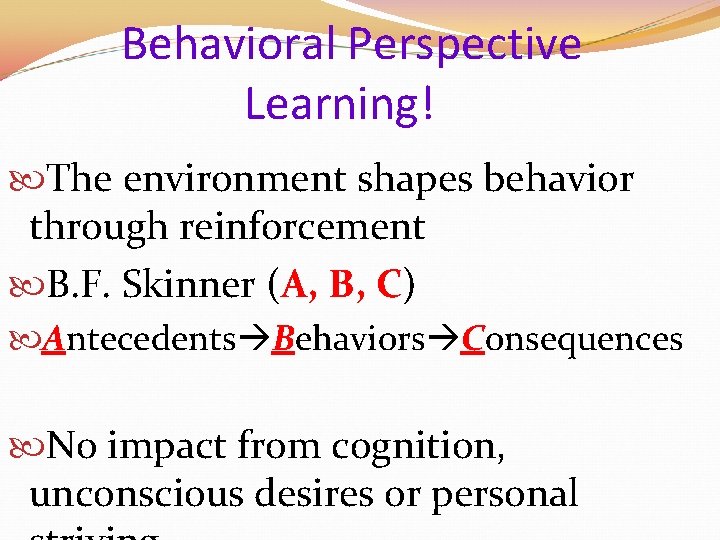
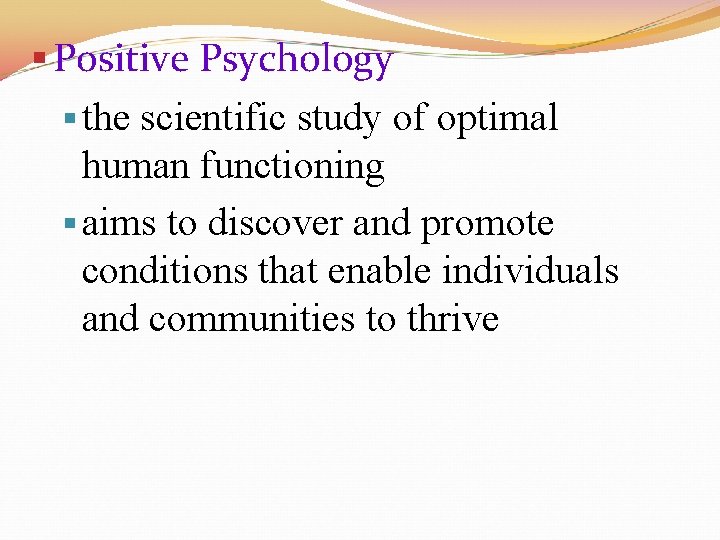
- Slides: 116

PERSONALITY • The word “personality”- from the Greek word persona, which means “mask. ” • When the Greeks performed on stage, they held masks over their faces to portray specific emotions: • anger, fear, sadness, joy, and depression.

Theory in Early Times Galen divided personality into 4 types (humors – fluids of body) 1. Phlegmatic: cool, patient, apathetic, fearful 2. Sanguine: sociable, cheerful, optimistic, playful 3. Choleric: strong willed, brave, decisive, leaders 4. Melancholic: sadness, analytic, sensitive, bashful

Phrenology Founded by Franz Gall Phrenos = mind logy = scientific study of Study of the bumps on the head It had an important influence on early psychology

William Sheldon’s Biological Theory of Personality Body build associated w/personality traits His theory has not been supported -Endomorph (heavy – jovial) -mesoporph (muscled – athletic) -ectomorph (thin – intelligent)

Personality “an individual’s characteristic pattern of thinking, feeling and acting. ” Four major perspectives on Personality Psychoanalytic - unconscious motivations Humanistic - inner capacity for growth Trait - specific dimensions of personality Social-Cognitive - influence of environment

Module 41 Psychoanalytic Perspective

Freud’s Theory of Personality • The first and most famous personality theorist was Sigmund Freud.

Levels of Consciousness: Iceberg theory 1. Conscious mind – like the top of the iceberg, only a small portion of our mind is accessible to us. 2. Preconscious mind – material that is unconscious, but can be easily brought into awareness. Moves back & forth easily between conscious & unconscious. 3. Unconscious mind – is completely outside of our awareness (could produce anxiety if made conscious).

“the mind is like an iceberg - mostly hidden” Conscious Awareness small part above surface Preconscious Awareness Conscious to unconscious Unconscious below the surface (thoughts, feelings, wishes, memories)

Freud: the Father of Psychoanalysis - Unconscious thoughts & emotions are brought into awareness to be dealt with. - Psychological problems – the result of unconscious processes. - Bringing unpleasant unconscious thoughts into to consciousness, produces catharsis.

§ ADD!!! § The techniques used in psychoanalysis for treating psychological disorders by seeking to expose and interpret unconscious tensions § Free association § Hypnosis § Dream analysis

Dream analysis: Dreams have two types of content: Manifest content- actual events in dream. Latent content – hidden message in dream. Freud thought that each dream represents a form of wish fulfillment. The wish may be disguised, but it is always there.

Freud Personality Structure § Id § contains a reservoir of unconscious psychic energy § strives to satisfy basic sexual and aggressive drives § operates on the pleasure principle, demanding immediate gratification

Freud & Personality Structure Id - energy constantly striving to satisfy basic drives Pleasure Principle Ego - seeks to gratify the Id in realistic ways Reality Principle Super Ego Id Super Ego - voice of conscience that focuses on how we ought to behave

The Id… is the first to form does not care what society thinks is aggressive is playful represents the child in all of us

§ Ego § the largely conscious, “executive” part of personality § mediates among the demands of the id, superego, and reality § operates on the “reality principle” § satisfying the id’s desires in ways that will realistically bring pleasure rather than pain

The Ego is… is logical the decision maker compromises between the id and the superego

§ Superego § the part of personality that presents internalized ideals § provides standards for judgment (the conscience) and for future aspirations § Your conscience

The Ego moderates between the Id and the Superego.

Roles in Freud’s Personality Theory -Id tells us what we want to do. -Superego tells us what we should do. -Ego tells us what we can do.

Missing a Superego Can you grow up with out a superego? Case study: Ted Bundy Infamous serial killer

Freud & Personality Development “personality forms during the first few years of life, rooted in unresolved conflicts of early childhood” Psychosexual Stages Oral (0 -18 mos) - centered on the mouth Anal (18 -36 mos) - focus on bowel/bladder elim. Phallic (3 -6 yrs) - focus on genitals/“Oedipus Complex” - (Identification & Gender Identity) Latency (6 -puberty) - sexuality is dormant Genital (puberty on) - sexual feelings toward others Strong conflict can fixate a person at Stages 1, 2 or 3

§ Psychosexual Stages § the childhood stages of development during which the id’s pleasure-seeking energies focus on distinct erogenous zones Oral, Anal, Phallic, Latency, Genital

§ Fixation § -a lingering focus of pleasureseeking energies at an earlier psychosexual stage, where conflicts were unresolved § -Over or undergratified leads to conflict § -Sexual energy (libido)

Oral Stage The pleasure center is the mouth. Freud said the pleasure center moves around the body as we develop. Freud said if we are not gratified at this stage we will be fixated at this stage. Adults who are fixated at this stage like to do things with mouth for pleasure (smoking, eating, chew gum, bite nails, other things. )

Anal stage Adults who were not gratified at this stage can be anally repulsive or anally retentive. Anal retentive are overly-neat and organized (Type A personality) Anal repulsive are overly messy and irresponsible.

The Phallic Stage - the child struggles with independence and inferiority - the child develops sexual feelings for the opposite sex parent while harboring jealousy towards the other parent - the child develops sexual feelings for the opposite sex during preadolescence

§ Oedipus Complex § a boy’s sexual desires toward his mother and feelings of jealousy and hatred for the rival father

§ Identification § the process by which children incorporate their parents’ values into their developing superegos § *Grow up like your parent!

Our personality (ego) deals with unpleasant emotions and thoughts by using: Defense Mechanisms

Defense Mechanisms Superego Id When the inner war gets out of hand, the result is Anxiety Id vs. Superego Ego Defense Mechanisms reduce/redirect anxiety by distorting reality

§ Defense Mechanisms § the ego’s protective methods of reducing anxiety by unconsciously distorting reality (id v. superego) § Must deal w/anxiety § We must control our sexual and aggressive impulses NOT act them out

Defense Mechanisms Repression - banishes certain thoughts/feelings from consciousness (underlies all other defense mechanisms) Regression - retreating to earlier stage of fixated development Reaction Formation - ego makes unacceptable impulses appear as their opposites Projection – attributes own threatening impulses to others

Rationalization - generate selfjustifying explanations to hide the real reasons for our actions Displacement - divert impulses toward a more acceptable object Sublimation - transform unacceptable impulse into something socially valued

Repression: “motivated forgetting” the suppression of unpleasant thoughts. We push unpleasant thoughts into unconscious so that we can’t access them to reduce anxiety Ex. a child who is molested, may suppress the traumatic event so that he/she has no memory for the event.

§ Regression § defense mechanism in which an individual faced with anxiety retreats to a more infantile stage, where some psychic energy remains fixated (id)

Regression Reverting to childlike behavior John Mc. Enroe

Rationalization: Two Types Rationalization occurs when an individual attempts to justify feelings, behavior, and motives which would otherwise be unjustifiable Two types: “sour grapes”: didn’t want anyway! “sweet lemons”: I like what I have! You steal and say, “Well, I spend a lot of money at this store!”

Everybody else is doing it! New Orleans looting after Katrina

§ Reaction Formation § defense mechanism by which the ego unconsciously switches unacceptable impulses into their opposites You do the opposite of how you feel to defend your own doubts. Ex. A person who doubts his faith may act like a religious zealot to defend his religion. Gay opponent leader…is gay!

Projection You attribute your negative characteristics to another person. When people project their own faults onto others, they generally do not deny that they themselves possess those faults. Ex: Your partner tells you how selfish you are, when they are in fact selfish.

Displacement you take out your anger & frustration on a person or object not the actual target of your anger in a negative way E. g. , After being grilled by your boss, you go home & yell at your partner or the dog/cat. Throw the bat when you strike out.

Sublimation Instinctual drives which are consciously unacceptable are diverted into socially acceptable channels *doesn’t provide permanent solution Ex: Aggressive impulses are Mike Tyson transformed into the urge to engage in competitive sports.

Denial Defense mechanism used when confronted with an intolerable reality A person refuses to accept painful truths

Denial refusing to believe something unpleasant has occurred. We refuse to accept horrible news, even with evidence to the contrary. Ex: you hear a friend has died & won’t believe it’s true – 911

“I don’t have drinking problem”

Neo “new”- Freudians § Carl Jung Less emphasis on social factors. Focused on the unconscious. We all have a collective unconscious: a shared/inherited well of memory traces from our species history.

Carl Jung Archetypes – universal symbols in certain literary characters that we all recognize Ex: wise old man, witches, messiah

Family archetypes The father: Stern, powerful, controlling The mother: Feeding, nurturing, soothing The child: Birth, beginnings, salvation Story archetypes The hero: Rescuer, champion The maiden: Purity, desire The wise old man: Knowledge, guidance The magician: Mysterious, powerful The earth mother: Nature The witch or sorceress: Dangerous Animal archetypes The faithful dog: Unquestioning loyalty The enduring horse: Never giving up The devious cat: Self-serving

Alfred Adler – Individual Psychology Childhood is important to personality. But focus should be on social factors - not sexual ones. Our behavior is driven by our efforts to conquer inferiority and feel superior. Discussed the Inferiority Complex We strive to be superior First to study birth order

Karen Horney -sought to balance Freud’s masculine biases -Disagreed w/Freud: women weak and over -emotional - Anxiety issues more imp. than sexual impulses

Erikson *Handout 8 stages of psycho-social development Face a “crisis” at each stage Quality of parent-child relationships

Erikson’s 8 Stages of Development • trust vs. mistrust • autonomy vs. shame • initiative vs. guilt • industry vs. inferiority • identity vs. confusion • intimacy vs. isolation • generativity vs. stagnation • integrity vs. despair

Humanistic Psychology In the 1960’s people became sick of Freud’s negativity and trait psychology’s objectivity. Focuses on fulfilled individuals with goal of reaching our full potential

The Humanistic Perspective Abraham Maslow’s Self-Actualizing Person Carl Roger’s Person-Centered Perspective “Healthy” rather than “Sick” Individual as greater than the sum of test scores

Abraham Maslow’s Self Actualizing Person Hierarchy of Needs • Ultimately seek selfactualization (the process of fulfilling our potential). • Maslow developed his ideas by studying what he termed “healthy people”. 1908 -1970

Self-Actualization the process of fulfilling our potential

Humanistic Perspective § Self-Actualization § the ultimate psychological need that arises after basic physical and psychological needs are met and self-esteem is achieved § the motivation to fulfill one’s potential (hierarchy of needs)

Self-Actualized People They share certain characteristics: • They are self aware and self accepting • Open and spontaneous • Loving and caring • Not paralyzed by others’ opinions. • They are secure in who they are. . • These people have found their calling in life.

Who did Maslow study?

Carl Rogers focused on growth and fulfillment of individuals Unconditional positive self-regard: giving person acceptance and love regardless how person behaves Congruency – our ideal self needs to match our actual self for us to be a fully functioning person. Believes in free will

Self concept : Two ways in which we view ourselves: who we think we are and who we ideally want to be. The “real self” and the “ideal self” 1. Real self: The you that you are 2. Ideal self -The self we think we should be -anxiety occurs when people see their ideal selves as significantly different from how they see their actual selves Goal: Fully functioning Individual (congruency) Uniting your real and ideal self

REAL IDEAL Incongruent self: neurosis REAL IDEAL Incongruent self: psychosis (shattered self)

Ideal Real Fully-Functioning Individual Congruence! Open to experiences Freedom from society Creativity

Carl Rogers – Humanistic Perspective § Unconditional Positive Regard § an attitude of total acceptance toward another person

Roger’s Person-Centered Perspective People are basically good with actualizing tendencies. Given the right environmental conditions, we will develop to our full potentials Genuineness, Acceptance, Empathy “Patients are clients”

Rogers believes that all creatures strive to make the very best of their existence If they fail to do so, it is not for a lack of desire! Carl Rogers- humanist believed we: have free will need unconditional positive regard, need congruence between our ideal and actual self.

How do we measure personality? (examples of personality tests)

Assessing & Evaluating the Self • Primarily through questionnaires in which people report their self-concept. • Self-report tests are questionnaires. • They rely on honesty. • Ex: Five factor, MMPI, Myers-Briggs.

§ Projective Test § a personality test, such as the Rorschach or TAT, that provides ambiguous stimuli designed to trigger projection of one’s inner dynamics § Projective tests ask subject to interpret a picture. § Used only by psychoanalysts; are subjective. Ex. TAT, Rorschach Ink

TAT Thematic Apperception Test A projective test which people express their inner feelings through stories they make about ambiguous scenes

Thematic Apperception Test (TAT) Developed by Henry Murray What is happening? Who are the people? How will it end?



§ Rorschach Inkblot Test § the most widely used projective test § a set of 10 inkblots designed by Hermann Rorschach

Rorschach Inkblot Test

Evaluation How did you arrive at your answers? Did you see things in pairs? Did you get your answers from the whole inkblot or just the edges?

Interpreting Rorschach he believed that subjects who… saw things in pairs were common and ordinary. …got their answers from the edges or from the blank spaces around the ink blot were nonconformists. …who saw explosions lacked emotional control. …saw sexual images had a crude and vulgar personality. …saw masks felt the need to present a façade …saw clouds suffered from free-floating anxiety.

• The Rorschach test is still used today in many clinical settings. • Most therapists, however, see it as a way to get a patient talking rather than a personality assessment tool.

The Trait Perspective

Trait Perspective No hidden personality dynamics…just basic personality dimensions Traits - people’s characteristic behaviors & conscious motives How do we describe & classify different personalities? (Type A vs Type B or Depressed vs Cheerful? )

Trait Theory Personality Traits = • relatively enduring • underlying dispositions that influence behavior across situations

Personality Traits are relatively stable and consistent personal characteristics -suggest that a person can be described on the basis of some number of personality traits Greeks: sanguine (cheerful) melancholic (depressed) choleric (irritable) phlegmatic (unemotional)

3 Early Trait Theorists Gordon Allport identified 4, 500 traits Raymond Cattel used factor analysis to identify 30 -35 basic traits Hans Eysenck argued there are 3 distinct traits in personality Extraversion/introversion Neuroticism

Gordon Allport He made systematic distinctions among traits in terms of their relative importance Cardinal traits Central traits Secondary traits

1. cardinal: pervasive characteristics that influence behavior (greed, self-sacrifice, sadism, religious service) ***traits that define one’s life 2. central: basic building blocks (core of one’s personality) competitive; generous, independence, intelligent, honest, shy and anxious 3. secondary traits: preferences, attitudes and situational traits

Raymond Cattell 2 basic levels of traits (groups) Surface traits Source traits

Surface Traits that are obvious integrity friendliness Tidiness • Surface traits are identified or projected by the individual according to the situation and environment.

Source Traits – general traits Settles on 16 source traits 16 PF: Personality Factor Questionnaire – Factor Analysis Reserved – outgoing Emotionally unstable – stable Serious – cheerful Timid – bold Trusting – suspicious Open – private Traditional – radical Undisciplined – self disciplined less intelligent – more intelligent submissive – dominant nonforming – conforming insensitive – sensitive practical – imaginative secure – insecure group oriented – self reliant relaxed – tense He used factor analysis to reduce Allport’s list of traits to 16 “clusters”

Eysenk’s Theory Prominent British psychologist Personality has a biological component and intelligence is inherited Hierarchy of traits Introversion-extroversion Neuroticism - emotional stability psychoticism

Hans Eysenk simple model of personality 1. introversion – extroversion 2. stable – unstable

The Trait Perspective § Hans and Sybil UNSTABLE Moody Touchy Eysenck use two Anxious Restless Rigid Aggressive primary Sober Excitable Pessimistic Changeable Reserved personality factors Impulsive Unsociable Optimistic Quiet Active as axes for melancholic choleric INTROVERTED EXTRAVERTED describing phlegmatic sanguine Passive Sociable Careful Outgoing personality Thoughtful Talkative Peaceful Responsive variation Controlled Easygoing Reliable Even-tempered Calm Lively Carefree Leadership STABLE

The “Big Five” model 5 broad personality factors Conscientiousness, Agreeableness, Neuroticism, Openness Extraversion CANOE

Overview of the Big “ 5”

§ Personality Inventory § a questionnaire (often with true-false or agree-disagree items) on which people respond to items designed to gauge a wide range of feelings and behaviors § used to assess selected personality traits

How can we assess traits? (aim to simplify a person’s behavior patterns) §Empirically Derived Test • a test developed by testing a pool of items and then selecting those that discriminate between groups § such as the MMPI § more valid than projective tests

§ Objective Tests Minnesota Multiphasic Personality Inventory (MMPI) • most widely used personality inventory • assess psychological disorders (not normal traits) • originally developed to identify emotional disorders • 10 scales to diagnose psychological disorders (schizophrenia, anxiety) • Built in lie scale

The Trait Perspective Clinically significant range Hypochondriasis 1 (concern with body symptoms) Depression 2 (pessimism, hopelessness) Hysteria (uses symptoms to solve problems) Psychopathic deviancy (disregard for social standards) 3 4 After treatment (no scores in the clinically significant range) Before treatment (anxious, depressed, and displaying deviant behaviors) 5 Masculinity/femininity (interests like those of other sex) 6 Paranoia (delusions, suspiciousness) 7 Psychasthenia (anxious, guilt feelings) 8 Schizophrenia (withdrawn, bizarre thoughts) 9 Hypomania 10 (overactive, excited, impulsive) Social introversion (shy, inhibited) 0 30 40 50 60 70 80 T-score § Minnesota Multiphasic Personality Inventory test profile

The Social-Cognitive Perspective

Social-Cognitive Perspective Behavior learned through conditioning & observation What we think about our situation affects our behavior Interaction of Environment & Intellect

Social-Cognitive Perspective views behavior as influenced by the interaction between persons and their social context Learning theory PLUS cognition and social influences

Social/Cognitive Perspective Proposed that each person has a unique personality because of our personal histories and interpretations shape our personalities ▲Albert Bandura’s social-cognitive approach focuses on self-efficacy and reciprocal determinism. ▲Julian Rotter’s locus of control theory emphasizes a person’s internal or external focus as a major determinant of personality.

Social Learning Theory Albert Bandura Self-efficacy -Bandura’s term a person’s belief that they can perform behaviors that are necessary to bring about a desired outcome -choose tasks consistent with interests and abilities

Stressed observational learning People with high self-efficacy (beliefs in personal effectiveness) are generally more likely to undertake challenges and persevere to see them through Importance of success experiences

§ Reciprocal Determinism § Cognitions, behaviors and environmental factors interact with each other § Road rage! § Personality changes with the situation!

Reciprocal Determinism Personal/ Cognitive Factors Environment Factors Behavior Internal World + External World = Us

What is locus of control? Locus means “place” in Greek (loci is plural) refers to a person's belief about what causes the good or bad results in life, either in general or in a specific area § Personal Control -our sense of controlling our environments rather than feeling helpless

External locus of control? Having an external locus of control means the cause of everything comes from the outside. § Luck or “just fate” § Less likely to succeed car accident: the car hit you or the roads were slippery. Acing a test – the teacher likes you. You are lucky.

Internal locus of control Having an internal locus of control – you believe you are the cause and solution to problems. You deserve credit. § Gain rewards thru hard work and effort § Self control predicts good adjustment, better grades and social success (study) Crash a car? “I wasn’t paying attention” Ace a test? I studied. I copied my notes onto note cards.

Trait (beliefs about control) Locus of Control (Rotter) Internal I control what happens to me! External People and circumstances control my fate!

Outcomes of Personal Control Learned Helplessness Perceived lack of control Important Issue • Nursing Homes • Prisons • Colleges Generalized helpless behavior

Martin Seligman Learned Helplessness § the hopelessness and passive resignation an animal or human learns when unable to avoid repeated aversive events

Social-Cognitive Perspective § Learned Helplessness Uncontrollable bad events Perceived lack of control Generalized helpless behavior

Observational Learning We are exposed to “models” Products of imitation Some models are more influential than others Slide # 114

Behavioral Perspective Learning! The environment shapes behavior through reinforcement B. F. Skinner (A, B, C) Antecedents Behaviors Consequences No impact from cognition, unconscious desires or personal

§ Positive Psychology § the scientific study of optimal human functioning § aims to discover and promote conditions that enable individuals and communities to thrive